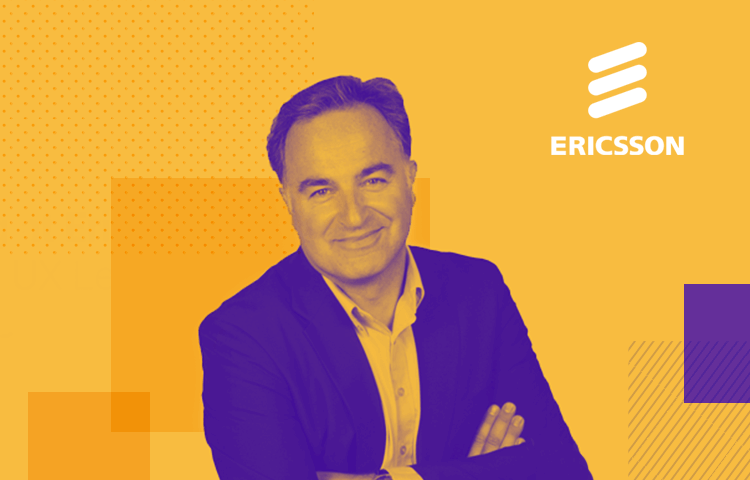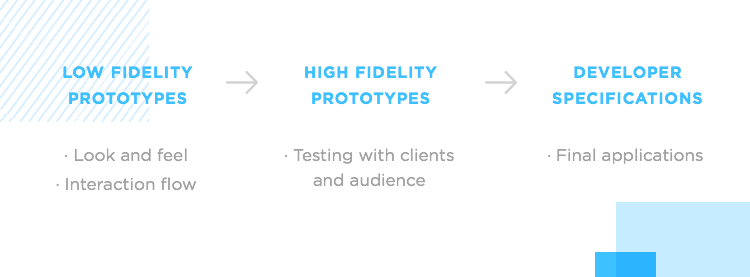Design Thinking at Ericsson: Q&A with Global UX Lead Didier Chincholle

Didier Chincholle, Global UX Lead at Ericsson, talks Justinmind through the planning, prototyping and blue-sky thinking Ericsson uses to create compelling user experiences.
Far from being buzzwords, Design Thinking and User Experience are key to how Ericsson designs and delivers products. The Swedish ICT and software behemoth brings a user-centric philosophy to all things digital, from the Internet of Things to networked cities.
And so far this approach seems to be working for Ericsson, as their 30% marketshare (according to the Wall Street Journal Group) and presence in almost 200 countries attests. Justinmind is excited to be one of their prototyping tools of choice, so we caught up with Global UX Lead in Business Unit Support Solutions Didier Chincholle to find out more.
Didier is passionate about user experience. Since 1997 he’s been a key member of the UX team at Ericsson, and has gained hands-on experience in every step of the design process, from customer research and prototyping to production and usability testing for all devices.

We spoke to Didier about how he and his team use Design Thinking to create digital products that deliver intuitive and tailored experiences to users, and the role of Justinmind as a prototyping tool in that process.
An average day for us is a day full of interactions and sharing. As a matter in fact, we have set-up multi-disciplinary teams with interaction designers, visual designers and user researchers, which define, design, interact with product & project managers, architects and developers.
Ericsson has incorporated Design Thinking into some of their technology projects, such as Innova. Can you outline for us how Design Thinking works at Ericsson?
In a large technologically-driven organization, the set-up of design thinking approaches and cross-channel multi-disciplinary teams that consider all aspects of the solution, design can be perceived as a challenge. At Ericsson, Design Thinking is being recognized and established as an important part of our organization’s business and strategy. Its value as a corporate asset is no longer in question.
“At Ericsson, Design Thinking is being recognized and established as an important part of our organization’s business and strategy. Its value as a corporate asset is no longer in question.”
Didier Chincholle - Global UX Lead at Ericsson
In our teams, where usability engineers, designers, developers and business stakeholders work collaboratively, the integration of UX criteria into tollgates and other standard product management process will ensure that products stay on track. By establishing a shared vision across all the groups involved in a project, this encourages effective teamwork and coordinated effort that are far more likely to lead to a great design.
Talking about intersection at this stage sounds a bit weird for us as prototyping is central to the Design Thinking approach we use in our teams. Very early in the process – through a set of sketches, paper prototypes or clickable wireframes – prototyping helps us to simulate the expected look and feel, as well as the interaction flow of the future application.
“In our teams, there is actually no design without prototyping.”
Didier Chincholle - Global UX Lead at Ericsson
It does also help to share a set of specific insights into the user interaction – with our stakeholders – that might be subject to redesign. High fidelity prototypes usually come next. They are demoed to our customers and tested with the product’s target audience. After a few additional iterations, prototypes are delivered as the ‘final’ application design specs to our development teams.

As one says, ‘If a picture is worth a thousand words, then a prototype is worth a thousand meetings’. It does increase interaction and sharing within our teams while reducing misunderstandings. In our teams, there is actually no design without prototyping…
Both user research and user testing play a key role in our process. There is no good design without user input/knowledge.
Knowing our products’ audience, understanding their environment/context of use,and identifying their pain points is THE starting point of our design thinking approach. We do observe, interview, survey users and collect the information that will be translated into designs through a set of sketches, wireframes and clickable prototypes.
Is it difficult to establish a Design Thinking methodology in a large company like Ericsson? What are your tips for making it work as an approach?
Indeed, this can be very challenging in a large organization such as Ericsson. Therefore a User Experience (UX) framework with roles, responsibilities and guidelines is being established in our business units to raise quality and to smooth the way for easier collaboration between teams and a better agile development.

What are the main challenges of pulling off successful software development projects, and how does prototyping help you solve them?
Seeing is believing! And touching, interacting and experiencing interfaces is key to selling concepts (to our customers), concepts that will turn into products. Prototyping tools are of paramount importance for our design teams, but also for our implementation and marketing teams.
A customer/user centric design approach gives a surprising advantage over any other approach. Spending time with our customers (and their users) through workshops and focus groups, as well as running user research through qualitative studies that will feed the design teams (which will create prototypes to be evaluated) is non-negotiable. This is the way to go.